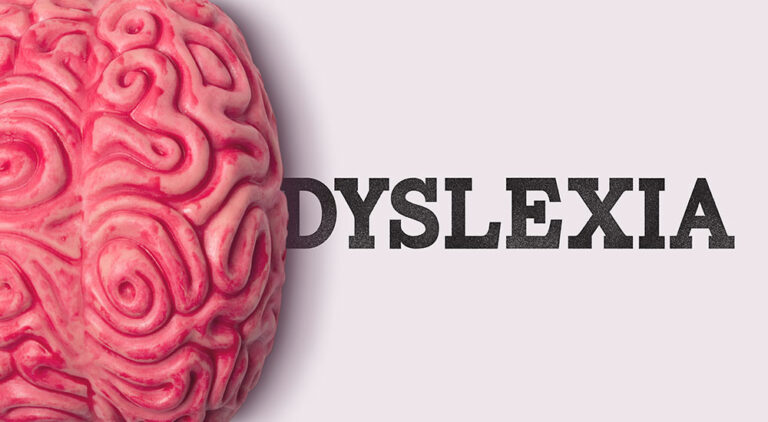What to do if you think your child has dyslexia
The first point that I consider important to emphasise is that, while dyslexia may impact learning, it is not a problem of intelligence. People with dyslexia are equally as smart as their peers – sometimes smarter.
Dyslexia varies from person to person and presents with a variety of different indicators, so it is uncommon for two people to be the same. Some signs are more common than others, and symptoms may range from mild to moderate, or even significant.
The most common sign of dyslexia is that there is very little consistency.
I shall highlight some of the noticeable characteristics of people with dyslexia, ranging from pre-primary children to those who are already adults
 In pre-schoolers we notice:
In pre-schoolers we notice:
- delayed speech,
- confusion between left and right,
- prolonged ear infections,
- mixing up words (was for saw or deb for bed etc),
- baby talk filtering in,
- not being able to identify rhyming words such hat, cat and sat,
- failing to remember nursery rhymes, even when they are sung,
- not establishing which hand they want to write with,
- difficulty with tying shoes laces,
- difficulty learning the sequence of the alphabet, or the seasons,
- an inability to learn to spell their own name.
Common traits in primary-school children and those in high school who are not diagnosed in high school include:
- writing that may be difficult to read and takes a lot of time to write – dysgraphia
- difficulty sounding out words and breaking them down again – encoding and decoding
- reading that is not fluent and therefore makes little sense,
- behavioural problems because the school work is tedious and difficult,
- reading short, function words incorrectly – such as for, saw, was, to, so,
- missing either the end or the beginning of a word, such as eat for eating and happy for unhappy,
- difficulty sounding out words phonetically so guessing words or just leaving them out,
- trouble remembering facts,
- difficulty with telling the time,
- difficulty remembering math facts,
- difficulty learning the times tables,
- difficulty with spelling, reading and comprehension
- difficulty with remembering a word that needs to be used in a sentence,
- being disorganised, for example a disorganised bag, desk or bedroom,
- tending to lose things, and often simply forgetting to do homework,
- difficulty remembering or recognising sight words that are difficult to break down, such as the, they, were,
- refusing to attend school, and a regular sore tummy,
- letter and/or number reversals that still occur in Grade 2 or 3,
- using pictures to make up the story being read rather than trying to use the actual words,
- no consistency with which words they do and don’t know from day to day,
- not understanding that words can be broken apart,
- avoiding reading at all costs – unwilling to read just for fun and not wanting to read to others, especially in class,
- finding comprehension difficult because reading is not fluent – the child is focussing intently on reading, therefore comprehension of what is read is lost,
- failing to understand that each letter of the alphabet has a sound,
- confusing words that have similar final sounds and resorting to guessing, for example was for saw or death for deaf,
- needing extra time to complete tests and homework,
- requiring intervention from a speech therapist, occupational therapist and a remedial therapist.
In high-school learners, the symptoms found in pre-primary and primary-school children are relevant, with the addition of the following: 
- limited vocabulary,
- poor expressive written language,
- poor reading and comprehension skills,
- an inability to develop verbal ideas and then express them on paper,
- may drop out of school,
- behaviour can become a problem especially in mainstream schools,
- poor results may result in the high school learner leaving school – especially in mainstream schools,
- may have difficulties trying to work on a second language,
- will struggle to complete tests and exams on time,
- difficulty remembering dates, phone numbers and addresses,
- trouble retelling a story.
As you can see, dyslexia presents itself in many different ways and the signs can become apparent from as early as four to five years of age.
If you suspect your child has a problem, seek help straight away because children with dyslexia will not cope in a mainstream school and a big classroom. They need regular intervention as well as a warm and caring environment, where they are not different.
So, what do you do if you think your child is dyslexic or dysgraphic? Do the testing. A psychologist will provide a full-scale educational assessment. A speech therapist, occupational therapist, or behavioural optometrist may be recommended.
It’s vital that you book your unique child into a remedial school, where he/she will receive the guidance and attention required for children with unique needs.
Ignore comments such as, ‘don’t worry, your child is immature and with time things will come right’. The problem doesn’t go away – everything gets more and more difficult.
We are not meant to be perfect – we are meant to be whole.
Discover the joy of learning with us…
Resources:
- International Dyslexia Association
- Shaywitz, S. E. (2005). Overcoming dyslexia: A new and complete science-based programme for reading problems at any level. New York: Vintage Books.







